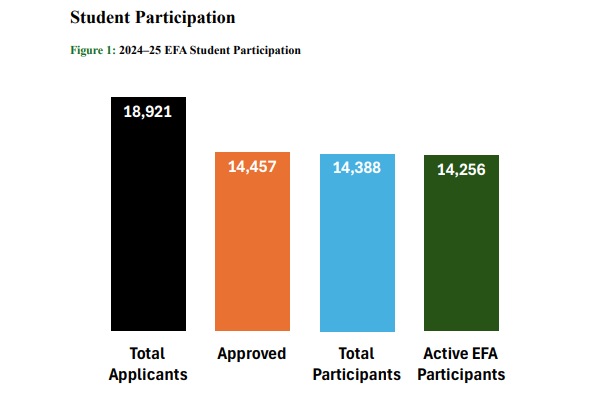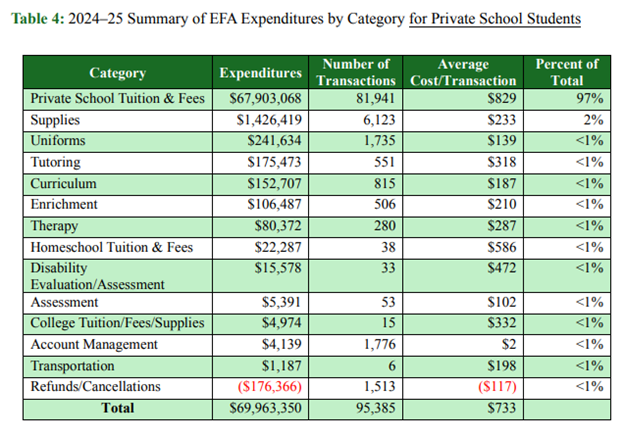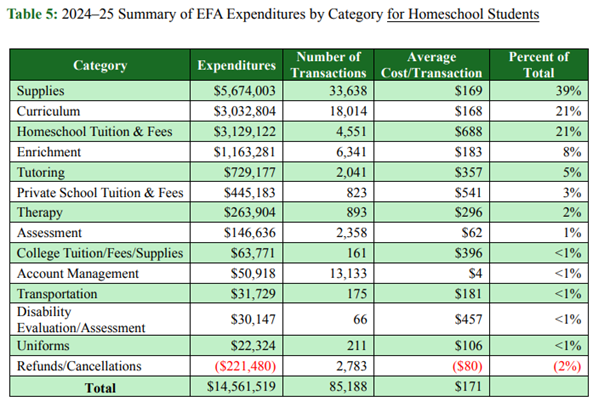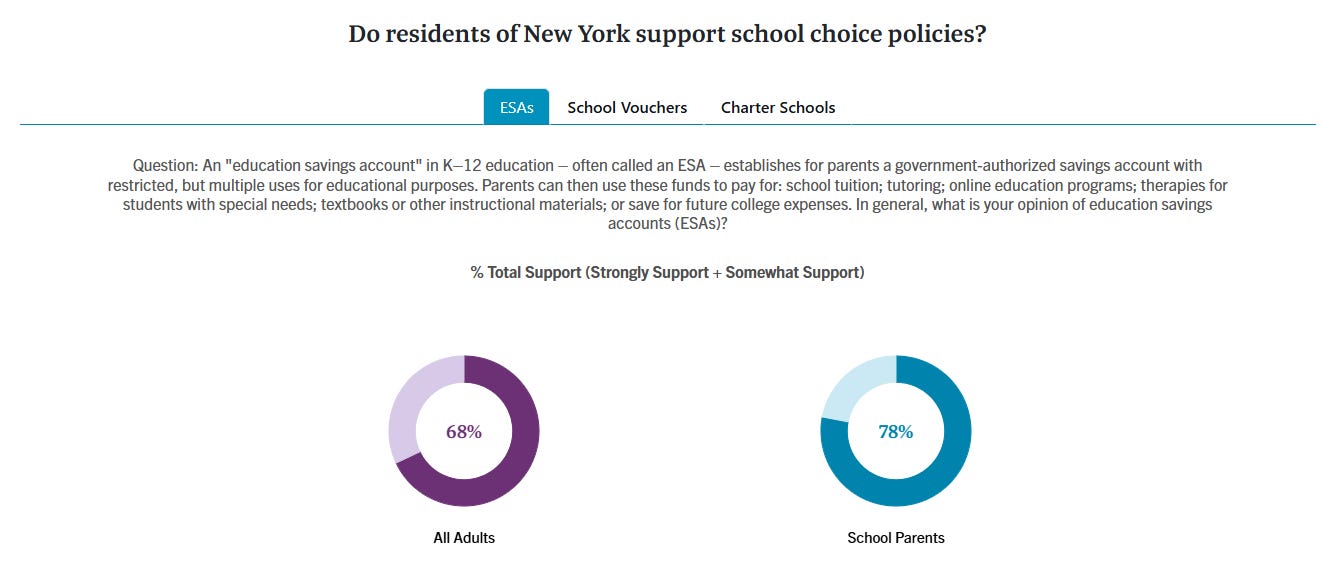What NY Can Learn from Arkansas’ Education Freedom Accounts Program
Daion Daniels shares the lessons from his research on the school choice program of Arkansas
I am excited to share a guest post by . I met Daion at a fellowship program this year and was immediately impressed with his knowledge of education history and his research project. When his report on Arkansas’ Education Freedom Account (EFA) was published, I asked him what were the lessons for NY and he generously shared his reflections.
Two weeks ago, I was proud to serve as the lead author on a new report from the University of Arkansas’s Department of Education Reform, exploring how families and schools are engaging with Arkansas’ Education Freedom Account (EFA) program.
The EFA is an education savings account (ESA) that allows families to receive public funds in a secure account to purchase approved educational items/services such as private school tuition, homeschool curriculum, tutoring, and school supplies.
Our report documents student participation, the amount of EFA funds spent on educational items, student test scores across a variety of assessments, parent satisfaction, and much more.
Arkansas’s Education Freedom Account (EFA) program didn’t start out as universal — it was designed to phase in gradually over three years. Each year, more families became eligible, leading up to full access for all K–12 students this current school year (2025-26).
In its first year (2023–24), the program was open only to a limited group of disadvantaged student populations, such as those with disabilities, children in foster care or experiencing homelessness, students in the state’s earlier Succeed Scholarship Program (former Arkansas private school voucher program), and kids from F-rated public schools.
The next year (2024–25), eligibility widened to include students from D-rated schools, as well as children whose parents serve in the military reserves, law enforcement, or as first responders. Homeschoolers could also participate if they met any of these criteria. The EFA account value was $6,856 per student, and students previously on the Succeed Scholarship received a bit more — $7,618.
Now, in its third year, the EFA program phase-in is complete. Thus, every K–12 student in Arkansas is eligible to participate in the EFA program. The average EFA account value also increased to $6,994 per student.
Main Results
As eligibility widened between the first and second year, families jumped at the opportunity to participate. There were 14,256 active students who were participating at the end of the second year, up from 5,548 active students at the end of the first year. The majority of the students were enrolled in private schooling (10,834), and 3,422 students were homeschooling.
The implementation of the EFA program was very effective in targeting specific populations. Among EFA participants, 36% had a disability, 27% were first-time kindergartners, 16% were children of active-duty or military reserve parents, and 6% were in foster care.
By year two, families had plenty of ways to put their Education Freedom Account funds to use — everything from tuition and uniforms to tutoring, curricula, technology, transportation, and even college courses.
All told, families spent about $84.5 million through the program. Most of that went toward private school tuition and fees, which made up 81% of all spending. The rest was spread across supplies (8%), curriculum (4%), and homeschool tuition (4%).
Private school families used nearly all of their funds (97%) on tuition and fees. Homeschoolers spend 39% on supplies, 21% on curriculum, 21% on homeschool tuition, 8% on enrichment programs, and 5% on tutoring.
The Case for New York
New York families can choose from charter schools, G&T schools, or traditional public schools — but if they want to send their child to a private school, they’re on their own. The state offers no private school choice program or education savings account that would let low-income families use public funds to find the best fit for their children. In other words, educational freedom in New York is available only for the wealthy.
For some families, their public schools are serving them well, but for others, this may not be the case. New York spends about $36,293 per student, which is an increase of 21% since the 2020-21 school year. Imagine if a portion of those funds could be accessed by families to empower families to make the best choices for their children.
The appetite for ESAs is already there. Polling is showing that the majority of New York residents (including school parents) support ESAs and that ESAs should be available to all families. If we truly believe every child deserves an education that fits their needs, then it’s time for New York to act. Expanding educational freedom through ESAs would ensure that opportunity isn’t limited by income, zip code, or circumstance.
Please share this newsletter with your friends and families.
Contact me if you want to help bring universal education choice to NY! #SchoolChoiceNY






